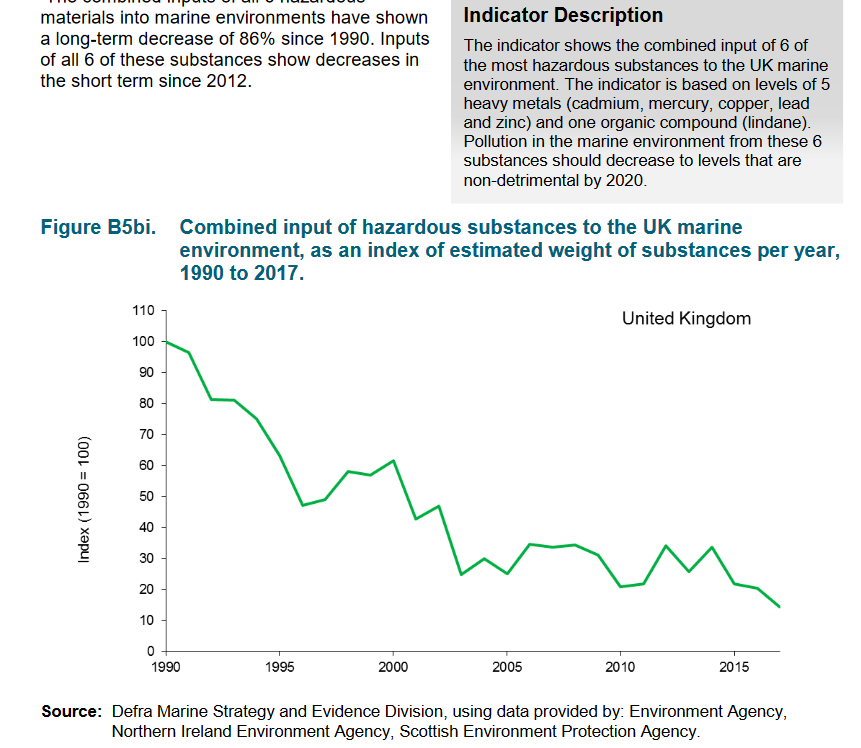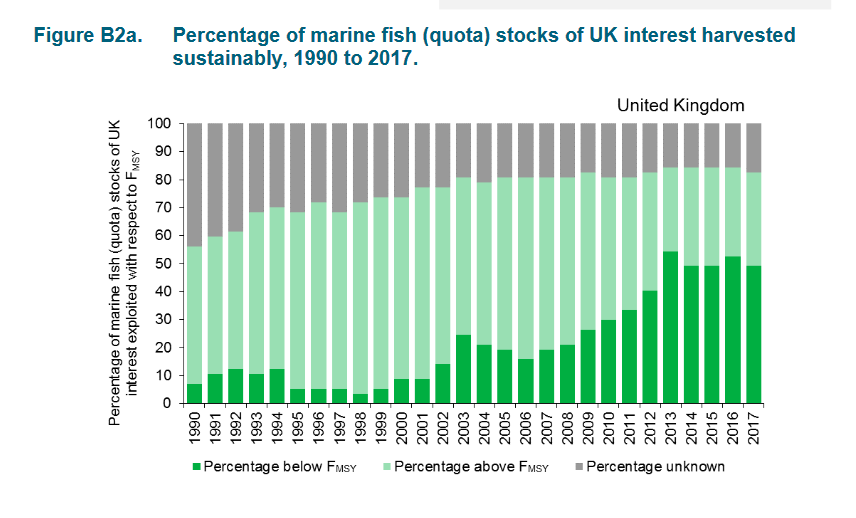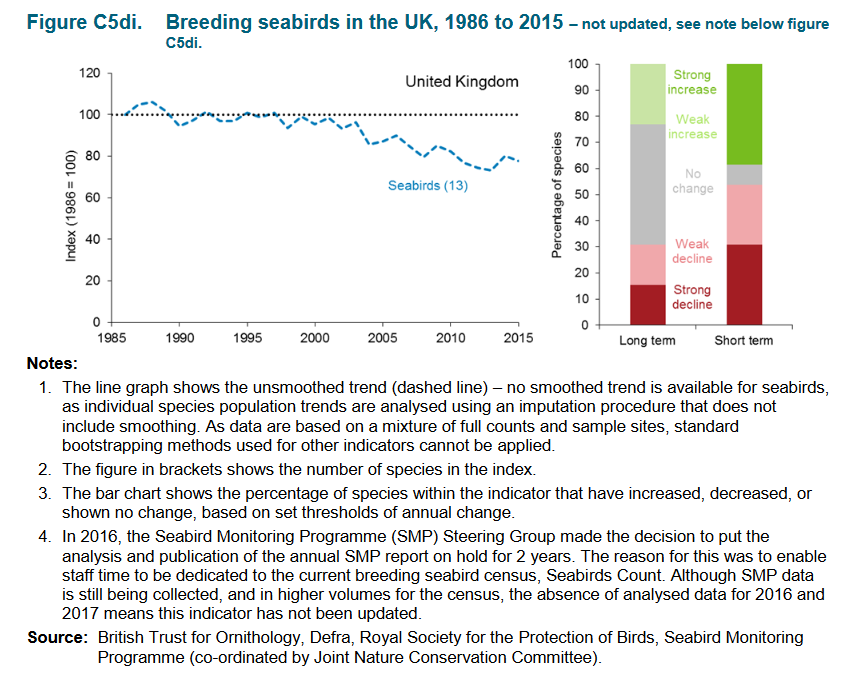Last week, the latest UK Biodiversity Indicators were published. Did you see the government press release about them? Did you hear Defra ministers quizzed about them on every news bulletin through the day?
This is the second blog post of the day on this report, and deals with the marine environment where there seems to be some good news.
My personal knowledge and understanding of issues and measures in the marine environment are lower than for terrestrial subjects so, speaking as a relative layman, these indicators all look good to me.
First, marine pollution is falling:

And protected areas have increased dramatically since the passing of the Marine Act by the last Labour government;

And fish stocks seem to be in better condition according to these two measures:


These graphs appear to me, in my state of relative lack of expertise, to be all good news. So government does has some good things to talk about but the idea of such a report is that there would always be good things and bad things published together (probably) and so government would have to take the brickbats with the plaudits.
This is very good news although it would be good to see some other biodiversity indicators aside from fish stocks being used – I know that is difficult to do.
But there is an index of marine seabirds;

One would have to look in much more detail, and with much more knowledge than I have, at these seabird declines but it has always been a possibility that a more sustainably managed marine environment might support (at least in the short term) lower seabird numbers. With a reduction of discarding vast numbers of fish behind trawlers the numbers of a variety of species that benefit from that unsustainable practice, might well decline. And so, biodiversity declines are not necessarily bad things (but they usually are!).
See earlier blog post about the indicators in general and farmland wildlife in particular.
[registration_form]
Progress on MPA designation, especially SACs and MCZs, since 2010 is cause for celebration but UK government’s aim was to achieve an ecologically coherent and well managed network of MPAs by 2012.
The Marine Strategy Framework Directive requires EU Member States to establish an ecologically coherent and well managed MPA network contributing to Good Environmental Status by 2020 (unlikely to be met by UK even if we ‘remain’), whereas the Marine and Coastal Access Act 2009 requires UK government and devolved administrations to conserve or improve the marine environment and protect representative features.
Gaps in representation within the UK MPA network, absence of high levels of protection from all but a tiny proportion of MPAs (notwithstanding current review by Defra’s HPMPA working group), lack of a condition state indicator for MPAs (in contrast to terrestrial SSSIs), progress on implementation of MPA management measures and the ‘whole site approach’, shortfalls in budgets of the IFCAs and the MMO charged with putting management measures in place, and legal challenge to use of Vessel Monitoring Systems (IVMS) for inshore fisheries management and enforcement suggest “could do better” would be a more honest assessment than “all good news”.
But are all the 57 stocks (species?) of fish actually caught commercially? Perhaps the ones which are doing well, no-one tries to catch, while all the ones doing badly are the main sea-fish like cod and herring.